We have a test that checks whether or a push button works or not, and as of now the test is done manually by hand. My question is how to do this automatically?
We have considered using a solenoid to push the button but have some hesitations on whether this might damage the somewhat delicate button or the PCB itself. The button is similar to this but mounted perpendicular to the PCB.
Some solutions I thought of:
Using a small solenoid with a damper so it doesn't accelerate quite as aggressive
Adding a spring between the button and the solenoid
Using a small linear actuator
Using a servmotor to actuate the button
I would prefer if the "buttonpusher" would revert back when the power is removed so I am somewhat biased against using a linear actuator or the servomotor.
